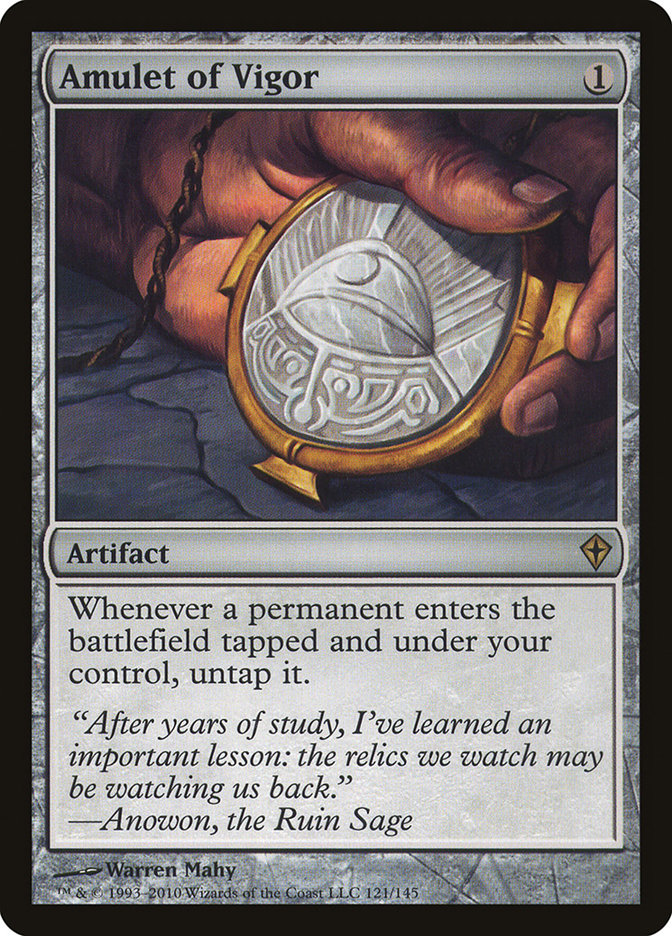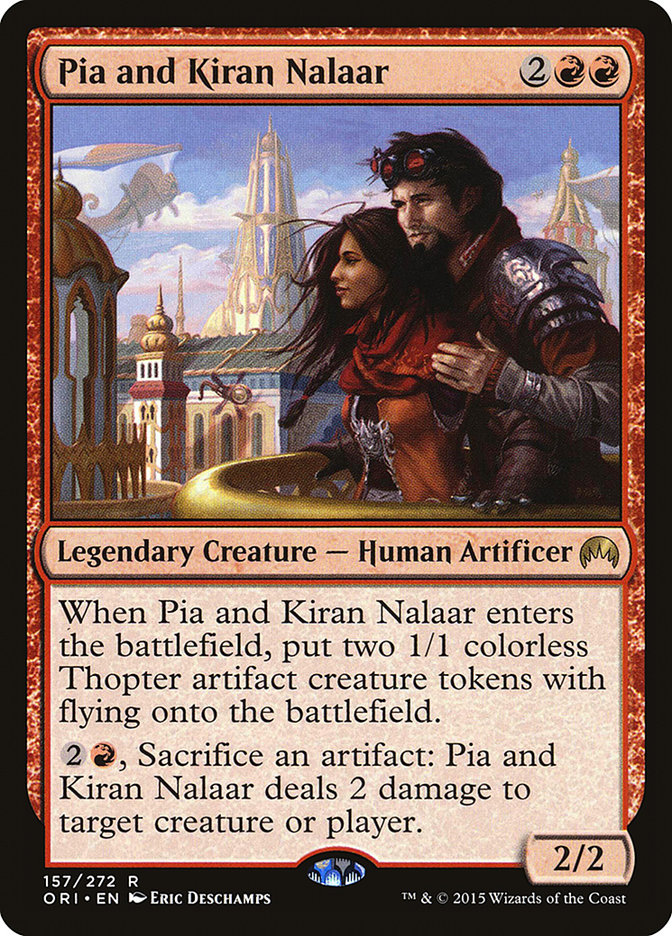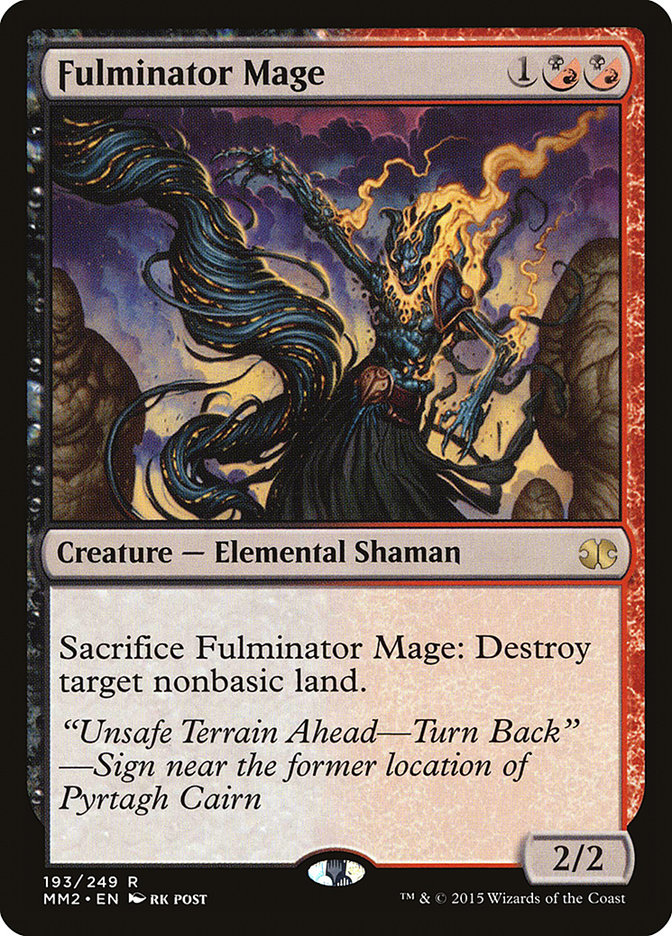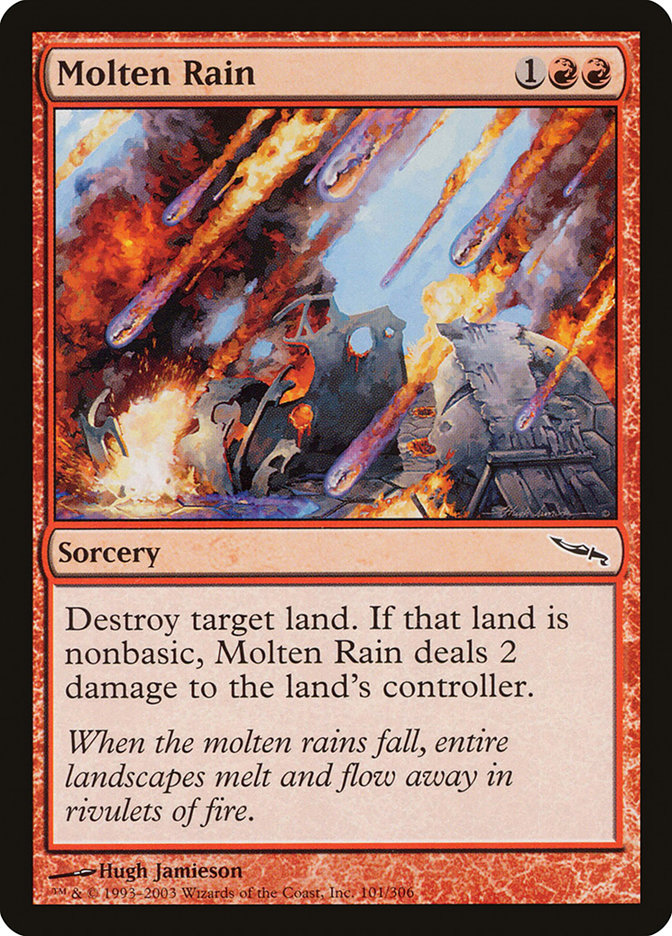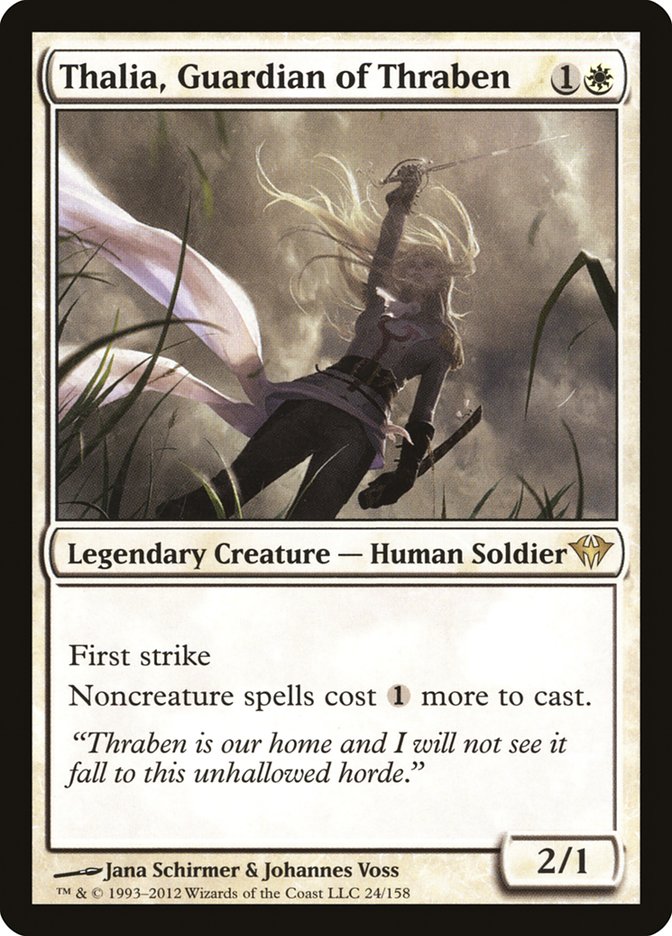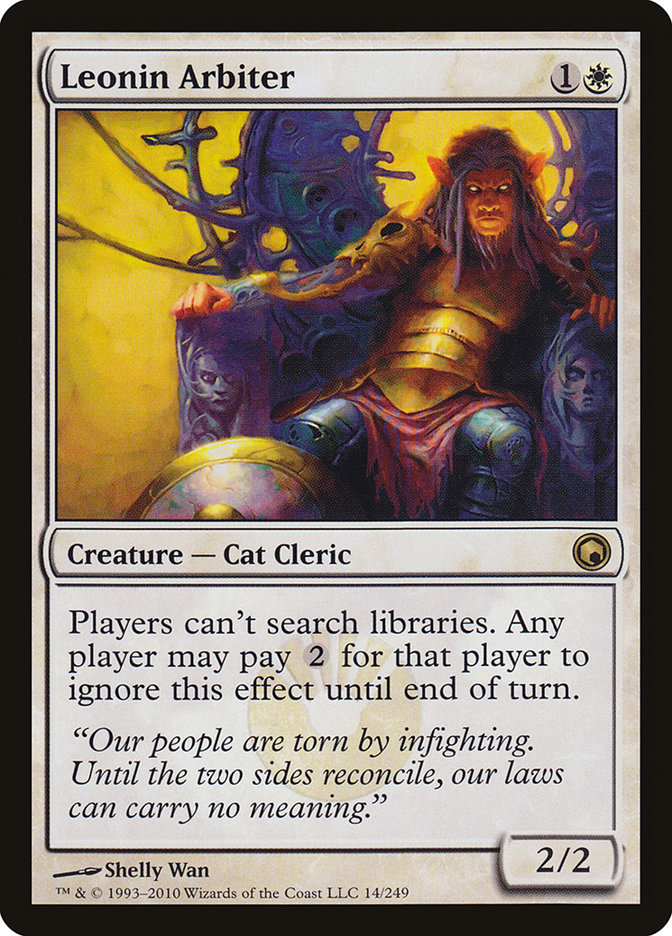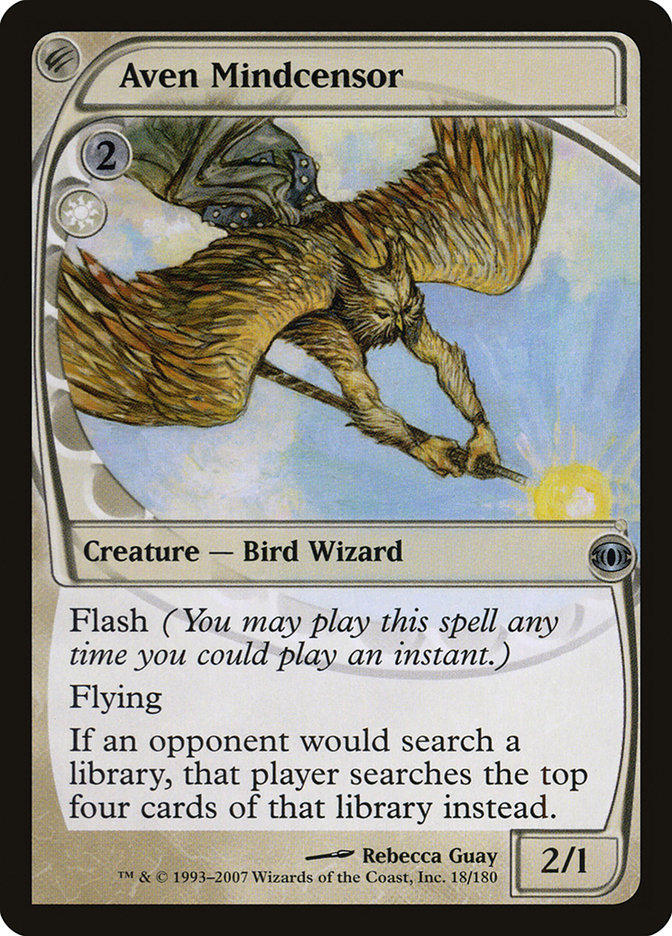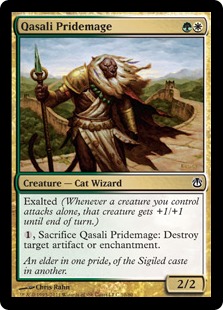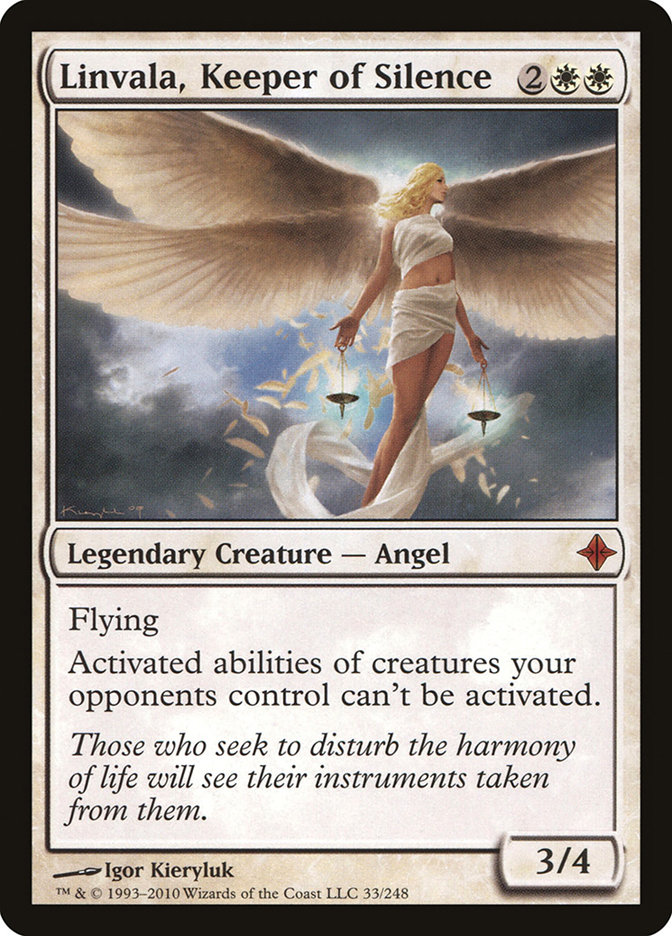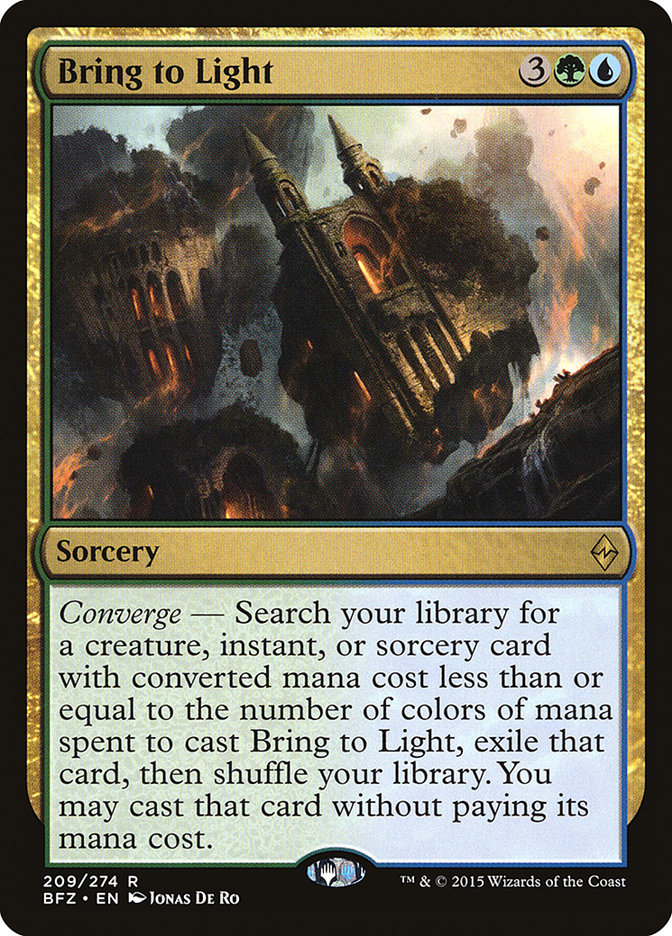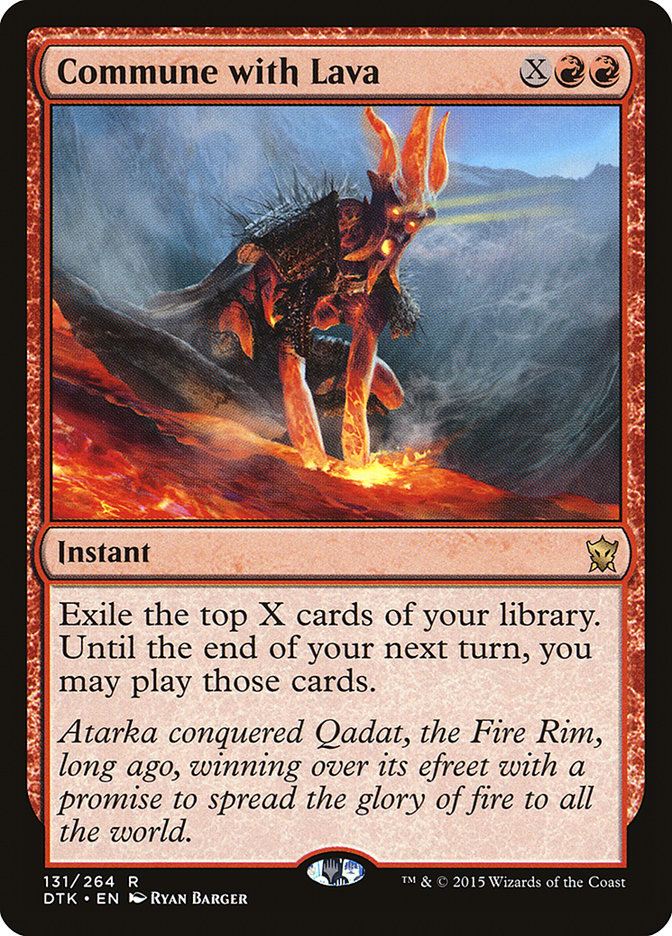The title of this article is, of course, ironic.
Splinter Twin and Affinity are two of the oldest and most historically prevalent archetypes in the format’s storied history. This weekend, #GPPitt was, in
many ways, an extremely typical Modern outing. As such, it is no surprise to see the most popular strategy (and eventual winner, and most heavily played in
the top 8) Splinter Twin, and the second popular strategy (and eventual runner up, and second most heavily played in the top 8) Affinity.
While much of the talk going into this weekend was about Amulet of Vigor, with vocal advocates of banning it espousing its unbeatable speed and resiliency,
once again, Amulet of Vigor’s performance appeared to be basically exactly what you’d expect given its win percentage and popularity.
There’s something about the feeling of getting killed on the second turn and the possibility of facing a draw so degenerate, there’s no beating it, that
makes one particularly susceptible to giving in to the temptation of valuing anecdotal evidence (I just died on turn 2, or whatever) over empirical
evidence (Amulet has the eighth best win percentage among major archetypes, or whatever). It’s not that I’m not sympathetic to concerns about the speed of
Amulet Bloom, because I am. I’m just noting that everyone that wants Amulet Bloom banned is doing themselves a disservice when they try to argue that
Amulet Bloom should be banned because it’s unbeatable. It keeps getting beat, over and over.
Me?
I don’t have a horse in the race. I ran out of trucks a while ago. I love facing decks like Amulet Bloom, because it is so exploitable, if you try,
particularly by strategies relying on large amounts of minor disruption and by some key cards that hose lots of people (like Blood Moon). Still, there is
no denying the speed at which Amulet Bloom decks are often capable of winning. If it got banned before PT Atlanta (ahhhhhh, Atlanta…), I wouldn’t shed any
tears. If it didn’t, however, I wouldn’t exactly predict it to take the title.
The #GPPitt day 2 metagame was 5.5% Amulet Bloom. Zero made top 8; but to be fair, there were three copies in the top 32. However, I’m more interested in
Twin and Affinity at the moment. With a combined five in the top 8, including first and second, there is no question, the two most popular decks of the
format still overperformed.
Here’s a look at the day 2 metagame in full, as well as a breakdown of the top 32 metagame, weighted by finish:
|
Archetype |
Day 2 Metagame |
Top 32 Metagame |
|
Twin |
12.1% |
23.8% |
|
Affinity |
10.4% |
20.6% |
|
Jund |
8.8% |
4.8% |
|
Zoo |
8.8% |
3.2% |
|
G/R Tron |
6.5% |
1.6% |
|
Abzan |
5.9% |
0.0% |
|
Amulet Bloom |
5.5% |
6.3% |
|
G/W/X Company |
5.5% |
3.2% |
|
4.3% |
6.3% |
|
|
Burn |
3.9% |
6.3% |
|
Infect |
3.6% |
3.2% |
|
Merfolk |
3.3% |
0.0% |
|
3.0% |
4.8% |
|
|
2.3% |
4.8% |
|
|
Jeskai |
2.0% |
0.0% |
|
1.6% |
0.0% |
|
|
1.6% |
0.0% |
|
|
W/B Tokens |
1.6% |
0.0% |
|
Elves |
1.3% |
3.2% |
|
Misc Combo |
3.3% |
0.0% |
|
Misc Other |
1.7% |
6.4% |
Modern is many things, not the least of which is diverse. With just two archetypes putting up double digit numbers and fifteen archetypes showing up at
least 2% on day 2, the current Modern format is definitely one with an extremely large array of playable strategies.
Curiously, though, it would appear most decks are below average(!)
How is this possible?
Seemingly paradoxically, most men in United States are of below average height.
How is this possible?
The key is in the difference between mean and median. Mean is the average found by adding up all the samples and dividing by the total number of samples.
While this number is a pretty good indicator of how much of something we might observe over a large number of samples, it doesn’t exactly give us the best
picture of what we’d see with one sample.
If you added up the height of all adult American men, then divide by the number of them, you’d find that the “average” height is 5’10”. However, if we
started picking adult American men at random, we’d find the majority are less than 5’10”. In fact, the actual halfway point (median) is about 5’8.5″.
That’s the spot where half are taller, half are shorter.
This disparity is possible because the people taller than 5’8.5″ are more tall than the people shorter are shorter. Put another way, there are more men
measuring 6’3″ than men measuring 5’2″, or rather, “tall” men are further from the middle than “short” men are.
Splinter Twin and Affinity are just two of the nineteen archetypes making up more than 1% of the day 2 metagame, yet they account for 22.5% of that field.
When popular decks overperform, it disproportionately depresses the rest of the field. In this case, they make up 44.4% of the top 32 metagame, which
leaves a lot less pie for the other big decks.
There are plenty of formats where the dynamic is just the opposite. The most popular decks are targeted and take a hit, while rogue decks seem to
overperform. This is not that format, however. This weekend, the “bad guys” won. A lot of people tried to make metagame calls, not fully
appreciating just how many other people were going to do the same (or perhaps just want to play whatever they enjoy).
This weekend rewarded consistent, inherently strong decks that didn’t care too much what the opponent’s gameplan was. This isn’t the same as goldfishing,
but rather speaks to playing decks strong on their own merits, rather than “positioning.”
For another perspective, here’s a comparison between the day 2 metagame and top 32 metagame arranged by how much the archetype over (or under) performed on
day 2. Archetypes that didn’t put anyone in the top 32 have been condensed.
|
Archetype |
Day 2 Metagame |
Top 32 Metagame |
|
Twin |
12.1% |
23.8% |
|
Affinity |
10.4% |
20.6% |
|
2.3% |
4.8% |
|
|
Burn |
3.9% |
6.3% |
|
4.3% |
6.3% |
|
|
Elves |
1.3% |
3.2% |
|
3.0% |
4.8% |
|
|
Amulet |
5.5% |
6.3% |
|
Infect |
3.6% |
3.2% |
|
GWx Company |
5.5% |
3.2% |
|
Jund |
8.8% |
4.8% |
|
Tron |
6.5% |
1.6% |
|
Zoo |
8.8% |
3.2% |
|
Misc Other |
21.0% |
6.4% |
The two top decks are substantially overrepresented in both popularity and success. Those just below them all overperformed, while the bottom several all
under-performed (which includes half a dozen major archetypes and many fringe decks).
What I thought was interesting was just how different the 42.8% of the field playing an overperforming deck looked from the underperforming chunk. Here’s a
look at the difference in fundamental approach between the winning archetypes and the losing archetypes, setting aside rogue decks:
|
Winners |
Losers |
|
|
Combo |
22.9% |
13.3% |
|
Aggro-Combo |
15.6% |
0.0% |
|
FairAggro/Midrange |
0.0% |
33.9% |
|
Control |
4.3% |
2.0% |
Without question, this is a combo format. It’s not just how disproportionately combo-centric the winner’s metagame is. The Aggro-Combo decks, like Affinity
and Burn, did great, while every single “fair” non-blue strategy underperformed.
As a note, this chart is missing the 5% of the day 2 metagame playing truly rogue decks, of which, only two showed up in the top 32 (Craig Wescoe’s top 4
with G/W Hate Bears and Anthony Huynh’s top 16 with U/B Faeries).
While there aren’t exactly the biggest surprises in this week’s winning lists, it’s still worth studying them moving forward. Up first, the deck to beat,
Twin:
Creatures (14)
- 1 Kiki-Jiki, Mirror Breaker
- 1 Pestermite
- 1 Vendilion Clique
- 1 Wall of Omens
- 4 Deceiver Exarch
- 4 Snapcaster Mage
- 2 Restoration Angel
Lands (23)
Spells (23)

Bianchi’s list is slightly exotic in its use of white for Restoration Angel, Path to Exile, and sideboard cards (okay, okay, and the miser’s Wall of
Omen).
That’s what I’m talking about! Elspeth is such an underplayed card in Modern. It has a relatively high cost for the format, no question, but it’s still a
very overpowered card that completely takes over games, brutalizing fair strategies.
The other two Twin lists in the top 8 were more traditional U/R (the most common color combination among Twin decks).
Creatures (11)
Lands (23)
Spells (27)

Creatures (12)
Lands (23)
Spells (25)

That sure is a lot of Blood Moons…
Just sayin’…
The top finishing Affinity decks aren’t exactly revolutionizing the format, but Modern is often about playing a good deck well, not reinventing the wheel.
Creatures (27)
- 4 Arcbound Ravager
- 4 Ornithopter
- 4 Steel Overseer
- 2 Memnite
- 3 Etched Champion
- 4 Signal Pest
- 2 Spellskite
- 4 Vault Skirge
Lands (17)
Spells (16)

Creatures (27)
- 4 Arcbound Ravager
- 4 Ornithopter
- 1 Master of Etherium
- 3 Steel Overseer
- 2 Memnite
- 3 Etched Champion
- 4 Signal Pest
- 2 Spellskite
- 4 Vault Skirge
Lands (17)
Spells (16)

That sure is a lot of Blood Moons…
Just sayin’…
…
The other three decks rounding out the top 8 make a pretty good cross-section of the format. Up first, my Team UltraPro teammate, Corey Burkhart, a man
after my own heart.
Creatures (11)
Planeswalkers (1)
Lands (23)
Spells (25)

Grixis? Jace? Tasigur? Rise//Fall?
I am literally swooning right now!
A full playset of Snapcasters and Kolaghan’s Commands? Now, I know you are just trying to put a smile on my face.
Okay, maybe Corey’s trying to put a smile on GerryT’s face, too. I’m okay with that.
That sure is a lot of Fulminator Mage and Molten Rain…
Just sayin’…
…
Speaking of Team UltraPro, you might have to bet on Craig Wescoe if the only info you have is that only one player top 32’ed with a “fair” non-blue deck:
Creatures (30)
- 2 Aven Mindcensor
- 3 Wilt-Leaf Liege
- 4 Noble Hierarch
- 2 Qasali Pridemage
- 1 Linvala, Keeper of Silence
- 4 Leonin Arbiter
- 3 Scavenging Ooze
- 2 Thalia, Guardian of Thraben
- 4 Loxodon Smiter
- 4 Voice of Resurgence
- 1 Brimaz, King of Oreskos
Lands (22)
Spells (8)

Craig’s deck is midrangey beatdown with Thalia, Guardian of Thraben, Leonin Arbiter, Qasali Pridemage, Aven Mindcensor, Linvala, Keeper of Silence, and a
sideboard only a hater could love.
That sure is a lot of ways to punish people trying to search up non-basic lands…
Just sayin’…
…
It’s tempting to dismiss unduplicated results put up by a “specialist” like Craig Wescoe, but it actually provides some amount of evidence that the
strategy just has more skill than most realize (or different skills than most realize)…
…Or it could be variance. Craig is really lucky.
You know how lucky it is to have your specialty be fair G/W decks? Imagine if your specialty was U/G?
Great. How much you want to bet there is a rise in popularity of U/G decks, now?
I didn’t mean it that way…
Speaking of land-based combo, there’s been talk swirling around Bring to Light Scapeshift…
Bring to Light means we can play a lot of Scapeshifts. It also means we can solve problems a lot easier than we used to…
…That is, if we played it, since the top finishing Scapeshift list was not Bring to Light-based, instead building around Primeval Titan:
Creatures (8)
Lands (27)
Spells (25)
- 2 Farseek
- 4 Search for Tomorrow
- 1 Primal Command
- 4 Scapeshift
- 4 Relic of Progenitus
- 4 Khalni Heart Expedition
- 4 Explore
- 2 Commune with Lava
Sideboard

Okay, now there’s some technology!
Commune with Lava is a sweet way to power through grindy, attrition decks. It’s also a great instant speed threat against control, as well as a way to take
advantage of all of these lands we’re searching up (you know, besides just combo-killing people).
…
That sure is a lot of ways to combo-kill someone that can’t stop us from searching up non-basics…
Just sayin’…

